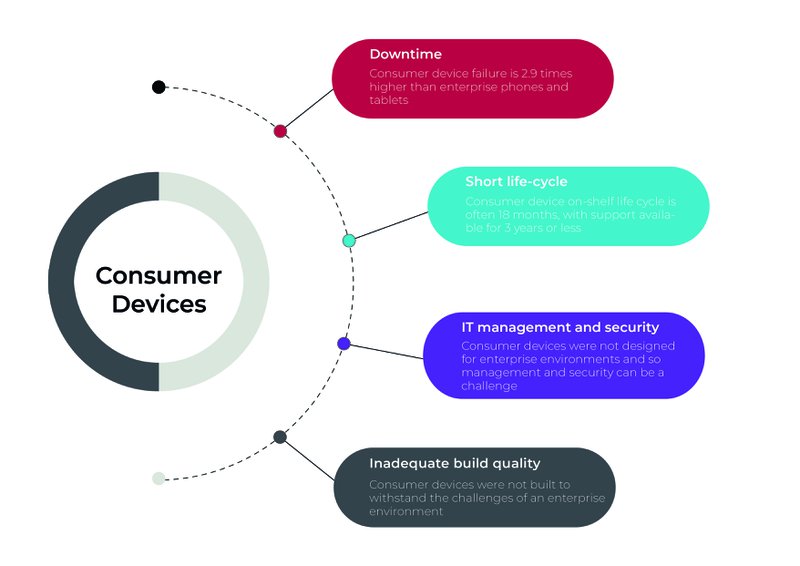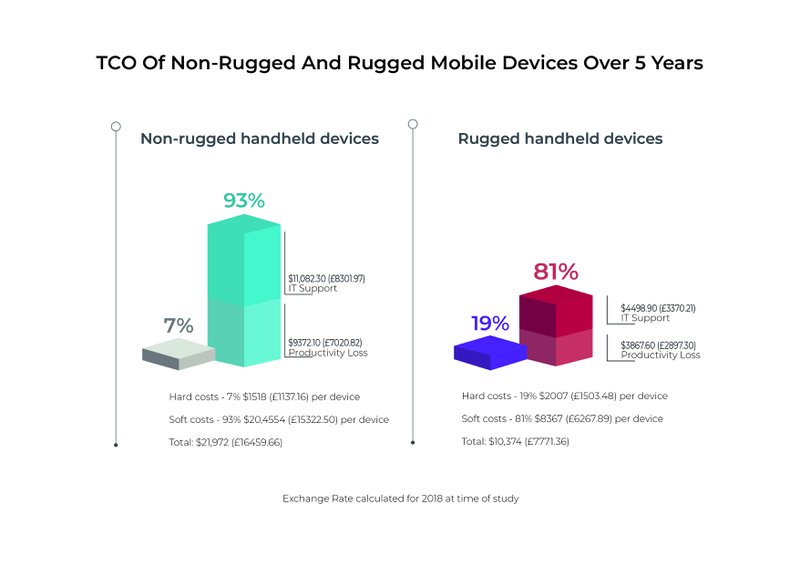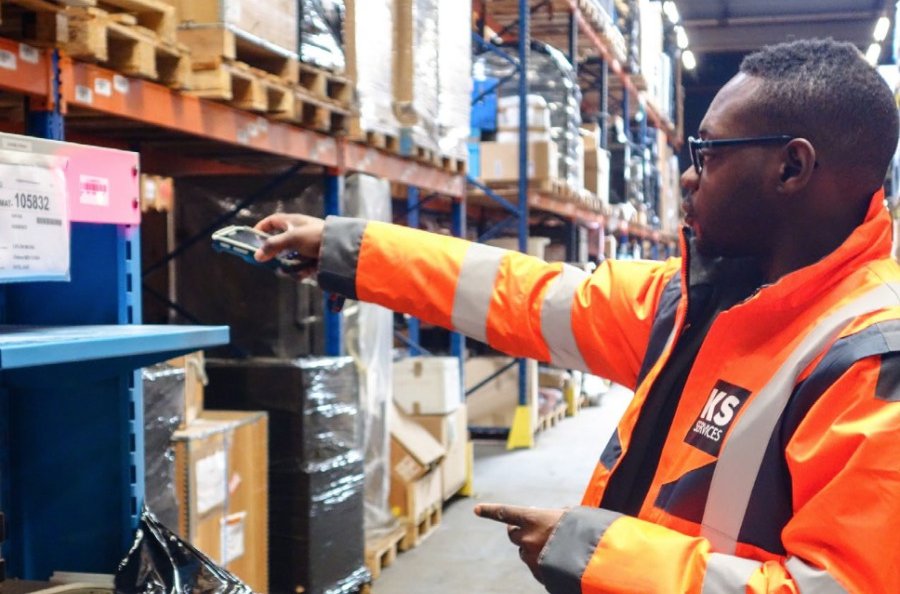One way of calculating the cost of mobile technology for your business is to compare the prices of devices. The cheaper models, you might reasonably assume, will cost you less and those savings will be magnified as you purchase tens or even hundreds of devices for your business.
The truth, to use a well-worn phrase, is a little more complicated than that. In fact, any true budgeting exercise for mobile devices will also look at costs beyond the initial outlay. These will include things like software, system design, training and downtime as a result of failure.
Welcome to the world of total cost of ownership. It will shine a bright light on every aspect of your mobile investment, so you can come away with a true understanding of what you’ll be paying when comparing one device with another.
Here’s what you’ll need to consider.
Total cost of ownership includes hard costs and soft costs
This key distinction is at the heart of making an intelligent choice when choosing mobile devices. Hard costs are your upfront fees such as hardware, software, and system design and integration. Soft costs are ‘hidden’ costs (in the sense that you might not initially consider them) such as training, operational requirements and downtime as a result of device failure.
There are two things worth pointing out in relation to the graphic below.
Firstly, hard costs go way beyond device procurement. There are many things to consider, such as accessories and peripherals, and software development costs.
Secondly, soft costs are going to be significantly greater than hard costs.
The market intelligence and consulting firm VDC Research has shown that soft costs will account for at least four fifths of the total cost of ownership of a device. In other words, comparing one upfront price of a device against another is only scratching the surface of the true cost of ownership.

Rugged devices are going to significantly reduce those soft costs
There’s another statistic we’d like to share with you. VDC Research shows that over 50% of the total costs of using a mobile phone or tablet in an enterprise environment are the result of lost worker productivity due to device failure.
Therefore, when considering total cost of ownership, you will inevitably want to choose a tough rugged device over a consumer model. We’ve talked in another post about what makes rugged devices truly durable. In a nutshell, compared to consumer models they offer greater resistance to: shocks and drops, liquid and particle ingress, and extreme temperatures. Conversely, consumer devices are far more fragile and fail 2.9 times more often than rugged phones and tablets. This can have disastrous consequences for businesses in terms of worker downtime, morale, lost revenue and reputational damage.
There are many more factors to consider when looking at how rugged models will help reduce soft costs compared to consumer models. These relate to issues around repairs and maintenance, software integration, battery life and charging, use of add-ons, and support and security. We’ve written at length about these elements in a post that looks at why consumer devices constantly fail businesses compared to rugged models. It’s definitely worth a read alongside this article to give you an in-depth look at the issues, to help you make the right investment in terms of TCO.
However, busy readers might like to cut straight to some numbers that quickly and convincingly put the case for rugged models over consumer devices in terms of total cost of investment.
A rugged versus consumer comparison: the statistics
VDC Research undertook an analysis of the total cost of ownership for mobile devices when supporting line of business applications. They looked at the cost of upfront acquisition, deployment, training, support and productivity loss caused by downtime.
Over a five-year period, they calculated that non-rugged handheld devices cost £16,459.66 per device and rugged devices £7,771.36. This means that rugged devices have a 52.7% lower total cost of ownership than consumer devices over five years.

Here’s how to calculate total cost of ownership
At this point, you’ll have a more comprehensive understanding of total cost of ownership and what it takes to price your mobile device investment. Hopefully, you’ll also be convinced of the benefits of rugged over consumer devices in terms of TCO.
But what if your situation is a little more complicated? For instance, one of your chosen models may have some rugged features, or you may need to compare two rugged models.
This is where Zebra Technologies’ TCO Calculator and Reporting Tool can come in useful. Working with a Zebra device reseller such as Nuffield Technologies, businesses can use the tool to establish hard and soft costs over time. We can help you directly compare two devices, providing information on the expected lifecycle according to your specific business scenario. The calculator provides detailed results by cost category and cost year, as well as cumulative project costs and considerations beyond TCO.
This consultation and report from Nuffield Technologies is completely free. To find out more, contact us on [email protected].
If you’d like to learn more about total cost of ownership and the differences between consumer and rugged mobiles, you can download our white paper ‘Consumer Versus Enterprise: Why Choosing Consumer Devices for Your Business Might Cost You More than You Think’.

